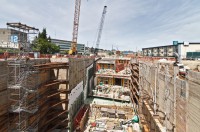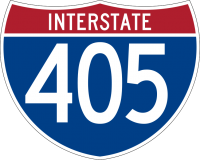 Seattle is in the middle of an enormous construction project. I haven’t kept up with the details, but my general impression was that it was a financial disaster. I spent a little time doing some research into the current state of the project and how far it has come:
Seattle is in the middle of an enormous construction project. I haven’t kept up with the details, but my general impression was that it was a financial disaster. I spent a little time doing some research into the current state of the project and how far it has come:
- The double decker highway, SR 99, going right along the waterfront is in severe need of replacement. The 2001 earthquake damaged it and it is a disaster waiting to happen. It’s also a terrible spot for an elevated highway. It runs like a big scar right along the beautiful waterfront creating a dark, gloomy, wet area that you have to walk through to get to the waterfront. The plan was to bore underneath it. You know, right next to the ocean. What could go wrong?
- It is the widest bored tunnel ever attempted.
- The initial budet was $3.1 billion and started in 2011. It was scheduled to be done in 2015. The tunnel boring part was expected to take 14 months.
- At the point when the tunnel was 10% complete, the state had spent 70% of it’s money.
- The drilling machine, Big Bertha, has moved 1437 feet. That’s about 15% of the total distance.
- Problems so far have included the machine getting stuck, the machine breaking and needing major repairs, and the ground caving in.
- When the machine broke, it was down for two years. There’s no way to back it out so they had to dig a huge hole to get down and repair it in place.
- Even parts of the project that don’t involve tunneling are over-budget. Replacing the seawall along Alaskan Way was a $331 million dollar project which is already about $100 million over budget.
- The most recent estimate I could find for completion was March 2018. Complete rebuilding of the waterfront will stretch into 2019.
- I couldn’t find anything that gives a recent estimate of the actual cost of the project. It seems like most people just shrug, laugh and cry.
I get why people thought this was a good idea. It would be beautiful to hide all that traffic and really beautify the area, but the discussions now are not around what would be beautiful, but rather, when should they cut bait and run. And of course, if they do decide to stop, they still have the original problem of the decrepit double decker SR 99 to deal with. It’s anybody’s guess how (and when) this one will turn out.


Toll-Free Times On 405
If you read the notes from the meeting where they decided this, it’s clear that they have a lot of data available. Some of those charts are incredibly interesting. If you’re a data nerd who travels 405, you’ll love it. But the main problem I have, as I’ve stated before, is that they aren’t optimizing just for maximum throughput on the road. You can see it in their notes. They always talk about how much money each of the options will cost them in lost revenue. The system is in place to generate money and give rich people a fast lane. I’m fundamentally opposed to that. The highway is a shared resource. Let’s maximize throughput. End of story.
So why am I surprised that they created a toll-free time? Because people are going to start realizing that the toll isn’t the part of the system that is important. The important part is having separate lanes with limited entry and exit points, just like a standard express lane setup. There are already calls for WSDOT to experiment with no-toll times during the day instead of just at night, but I can’t imagine them doing that. They’d be giving up a lot of money and that’s a higher priority for them than just improving throughput. Making it free at night and on weekends costs them 3% of their total revenue and removes traffic jams that the HOT system added on the weekends so it’s a nice PR win and actually does improve traffic. Changing the daytime rates would be a much bigger hit to their bottom line.